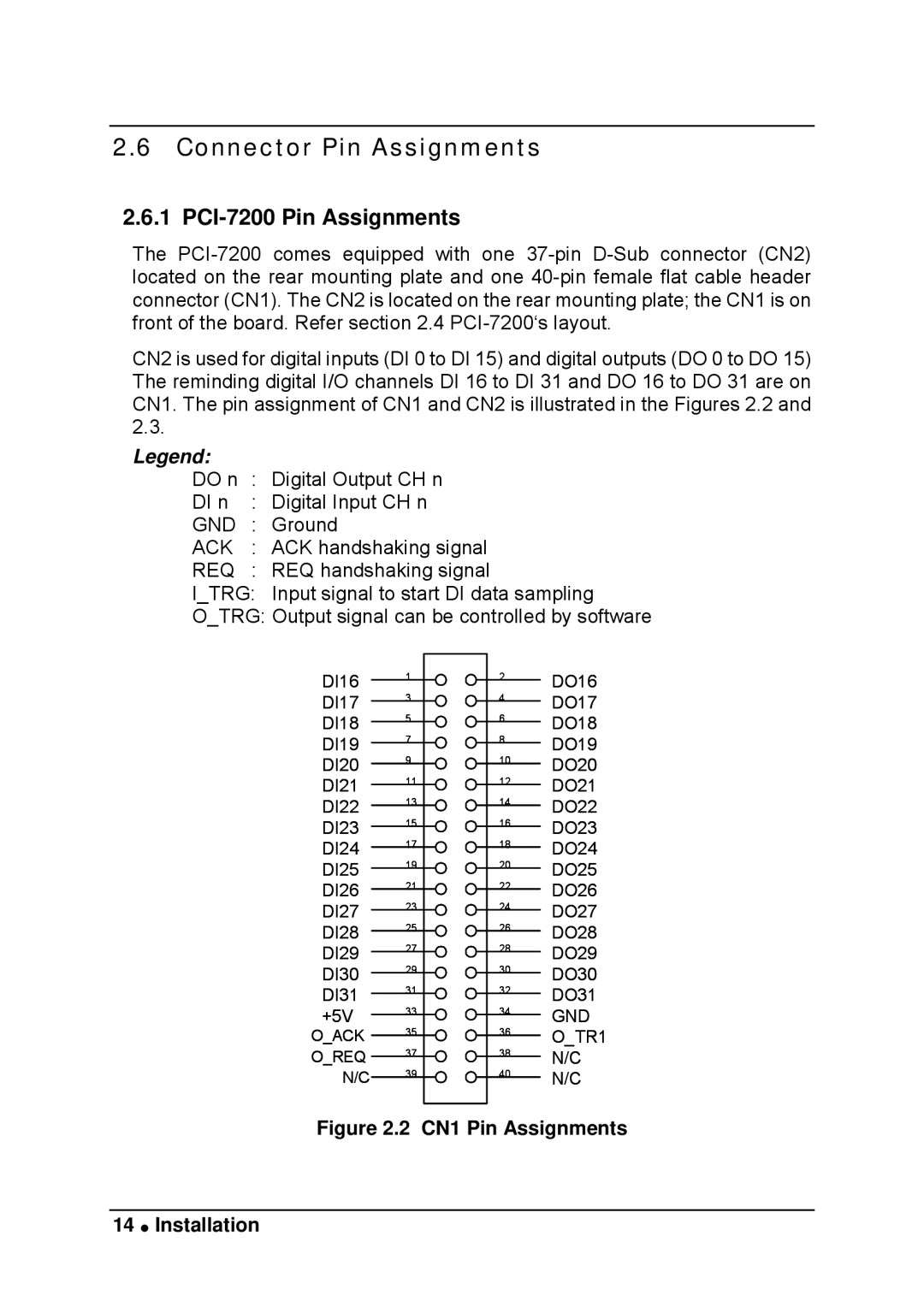LPCI-7200S specifications
The Intel LPCI-7200S is a powerful and versatile communication controller that stands out in the field of embedded computing solutions. This product is designed to cater to a wide range of applications including industrial automation, telecommunications, and transportation systems. Its robust architecture, combined with advanced features and technologies, makes it an attractive option for developers and system integrators looking for reliable performance in mission-critical environments.One of the main features of the LPCI-7200S is its enhanced processing capability. The controller is built around Intel’s latest processor technology, enabling high-speed data handling and improved overall system response. This makes the LPCI-7200S suitable for applications that require real-time data processing and quick decision-making based on incoming information.
Additionally, the LPCI-7200S incorporates a variety of communication interfaces, ensuring seamless integration with other devices and systems. It features multiple serial ports, Ethernet interfaces, and various other connectivity options, allowing for flexible configuration depending on the needs of the application. This versatility enables users to easily connect a range of peripherals, including sensors, cameras, and other industrial equipment.
The LPCI-7200S also supports various industrial communication protocols, making it adaptable to specific market needs. With support for standards such as CAN, Modbus, and Ethernet/IP, it can facilitate efficient data exchange in diverse industrial environments.
Power efficiency is another key characteristic of the LPCI-7200S. Intel has designed this controller to operate effectively within lower power consumption thresholds, which is critical for embedded applications, particularly those that need to manage thermal output and maintain long operational life without requiring frequent maintenance.
Moreover, the LPCI-7200S boasts a rugged design, suitable for harsh environments. Its components are built to withstand extreme temperatures, vibrations, and dust, ensuring functionality even in challenging conditions. This durability makes it an ideal choice for use in outdoor applications or manufacturing settings where reliability is paramount.
Finally, with an emphasis on security, the LPCI-7200S implements advanced cybersecurity features to protect sensitive data and prevent unauthorized access. This attention to security is increasingly important in modern connected environments where the risks of cyber threats are ever-present.
In summary, the Intel LPCI-7200S is a cutting-edge communication controller that offers a blend of processing power, versatile connectivity, industrial protocol support, energy efficiency, ruggedness, and security. These characteristics make it an invaluable asset for a wide array of applications across various industries.

